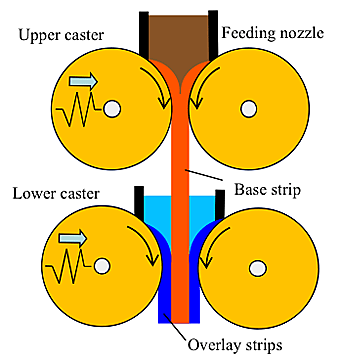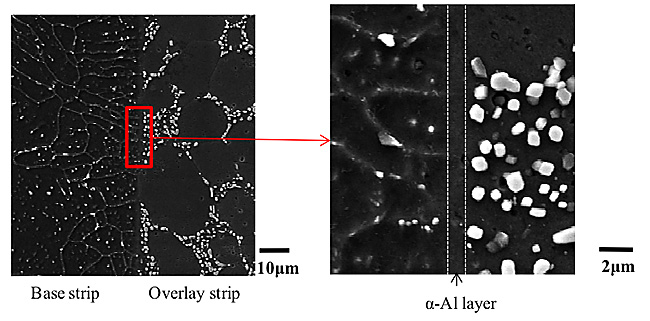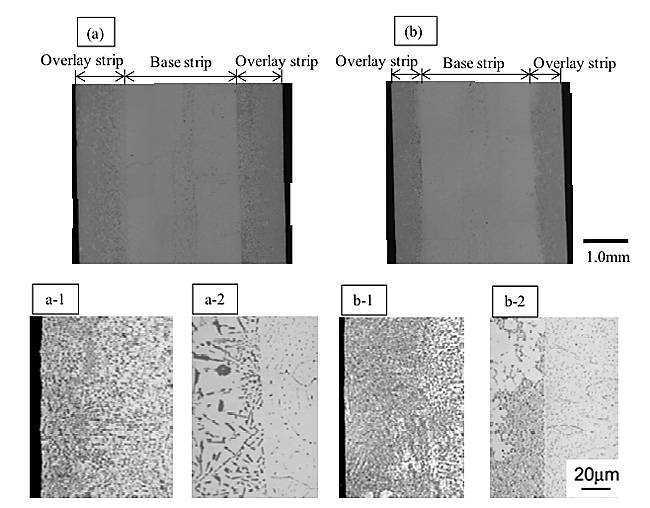Microstructure of 3003/4045 Aluminum Alloy Clad Strip Fabricated by Vertical Type Tandem Twin Roll Caster
Aluminum alloy clad sheets are generally produced by hot roll bonding, but this conventional manufacturing process involves many steps. In the present study, clad strips were produced from molten alloys in one step. Two sets of twin roll casters were set in tandem vertically (Fig. 1). The base strip (3003 aluminum alloy) was produced by the upper caster, and the strip was drawn into the roll-bite of the lower caster. The molten overlay material (4045 aluminum alloy) was poured, and the base strip was sandwiched between the two overlay strips. The microstructural characteristics of the three-layer clad strip were investigated. When the initial roll separating force of the lower twin-rolls was high, the overlay strip in the clad strip became thinner, and fine eutectic Si particles were formed in the overlay strip by rapid solidification (Fig. 2). Neither remelting of the base strip nor formation of an alloyed layer was observed at the cladded interface owing to the high production rate, but the thin layer of  -Al was observed (Fig. 3). Microstructural observation revealed that skin-formation type solidification of the overlay alloy took place from both the roll surface and the base strip surface.
-Al was observed (Fig. 3). Microstructural observation revealed that skin-formation type solidification of the overlay alloy took place from both the roll surface and the base strip surface.
[Published in Proceedings of the 13th International Conference on Aluminum Alloys, June 3-7, 2012, Pittsburgh, USA, pp. 1463-1467.]
 |
|
| Fig.1 Vertical type tandem twin roll caster. |
|
|
|
|
Fig.2 Microstructure of the clad strip, (a, a-1, a-2): roll separating force, 1.1 kN; (b, b-1, b-2): roll separating force, 8.8 kN. a-1 and b-1 show the region near-the surface of the overlay strip. |
 |
| Fig.3 SEM image of interface. |
